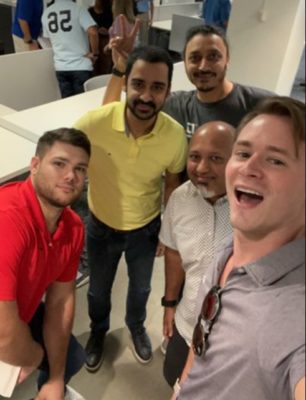
Inclusion: We’re all in it together
In my last three blog posts, we looked at Diversity, Equity, and Inclusion holistically and then took a deep dive into Diversity and Equity. In this blog, we deep dive into the final topic – Inclusion.
- Diversity: aims to hire more people that come from different backgrounds
- Equity: arms everyone with the resources that they need most
- Inclusion: focuses on ensuring that each person feels they are a part of the team
“Diversity is being invited to the party. Inclusion is being asked to dance.”
The root of all exclusion
In a study done by Forbes earlier this year (2021), they surveyed roughly 5,000 individual experiences from about 1,500 different people. This study included a wide range of companies of all shapes, sizes, and industries. What they found was that a vast majority of the experiences where employees felt excluded were due to people, not policies. Interestingly, the highest number of experiences where people felt excluded was with Leadership.
The numbers from this dataset don’t add up to 100% as people could choose more than one source, but 58% of all exclusion experiences were sourced back to leadership. When people say that organization change starts from the top, they really mean it. Managers and peers saw the next highest number of events involving exclusion. We always hear that people quit their manager and not their job. I think this data paints that picture extremely well.
A deeper dive into the data shows something truly interesting. Forbes divided up the data into majority and minority groups. They wanted to see if everyone feels equally excluded by leadership, managers, and peers or if there is some level of bias. When it comes to exclusion from Leadership, majority and minority groups are equally impacted. The data on exclusion by managers and peers tells a very different story. In both cases, minority groups are significantly more impacted than majority groups (a difference of 11% – 13% in both cases).
It starts from the top
The issue with inclusion that makes it hard for people to manage is that in many cases, people don’t realize that they are being exclusive. This is referred to as unconscious bias and it doesn’t just apply to people, but also to many other things in our lives. Someone might be more inclined to buy from one car manufacturer over another because they heard that one brand is notorious for maintenance issues. Another person might be more likely to never fly with a specific airline again as their bag was accidentally lost on a previous vacation. Researchers believe that these unconscious beliefs originate from previous experiences and that your brain is wired to make quick judgements and decisions. In the end, we’re all human and the good news is that this can be changed.
The leaders in your organization can help to promote this change in two ways. The first is to go through training on inclusivity and unconscious bias. The focus of this training is to learn the importance of being inclusive and how to be more aware of this bias when working with your (hopefully) more diverse workforce. Training can cover topics such as: promoting active listening, encouraging different viewpoints during meetings, and the differences between being a manager and a leader. The second part is accountability. This focuses on having each manager be the owner of the inclusivity efforts for their direct reports.
Listen to your employees
In my experience, people rarely seem to speak up when they feel that they are being left out. Remember that kid from school that ate lunch by themselves? They probably felt anxious, on an island, and alone. Your employees may be feeling the same way, and it goes unnoticed — even if they leave the organization. A good way to capture the level of inclusivity in your organization is simply by asking your workforce. I recommended this in my blog on Diversity, but it can also be a helpful way to gauge inclusion. Pulse surveys are also an excellent way to bring DEI-focused topics front and center and gauge how your employees perceive your current efforts as their anonymity helps to encourage participation and honesty.
Employee resource groups
This is a fun one that I absolutely love. Employee Resource Groups (ERGs) refer to groups of employees that help promote the organization’s mission, values, goals, or really anything that you can think of. These aren’t necessarily steering committees, but they could be. They are a way for employees to collaborate on things outside of their typical job function. For example, here at TalentQuest, I am on the Rewards & Recognition committee. We meet every month and discuss upcoming employee events, updates to our employee engagement system, upcoming work anniversaries, and we even planned our recent Employee Appreciation Week. It introduced me to people within the TalentQuest family that I may have never met and allows me to focus on something that I really care about.

The thing is about ERGs is that you can allow your employees to form them based on anything that your company cares about. Maybe health and wellness are a big initiative at your organization. Why not let a few of the health enthusiasts on the team form a group where they setup weekly runs or bike rides that anyone in the organization can join in on? Or what if you all love food (who doesn’t?). Why not have a breakfast club where each week someone brings in their favorite breakfast foods on Thursdays? The sky is the limit on this one and it can build a strong sense of belonging in a short amount of time with little effort.
Know better. Do better.
There are many ways to build a more inclusive workplace. The thing to keep in mind is that people don’t feel excluded because of some policy that’s in place, but because of the people that they work with every day. With the right training resources and accountability to back it up, you can build a more inclusive workplace where people are not only invited to the party but are also asked to dance.
This blog is the final installment in a four-part series on DEI from Jordan Kennedy. You can read the previous posts here:
